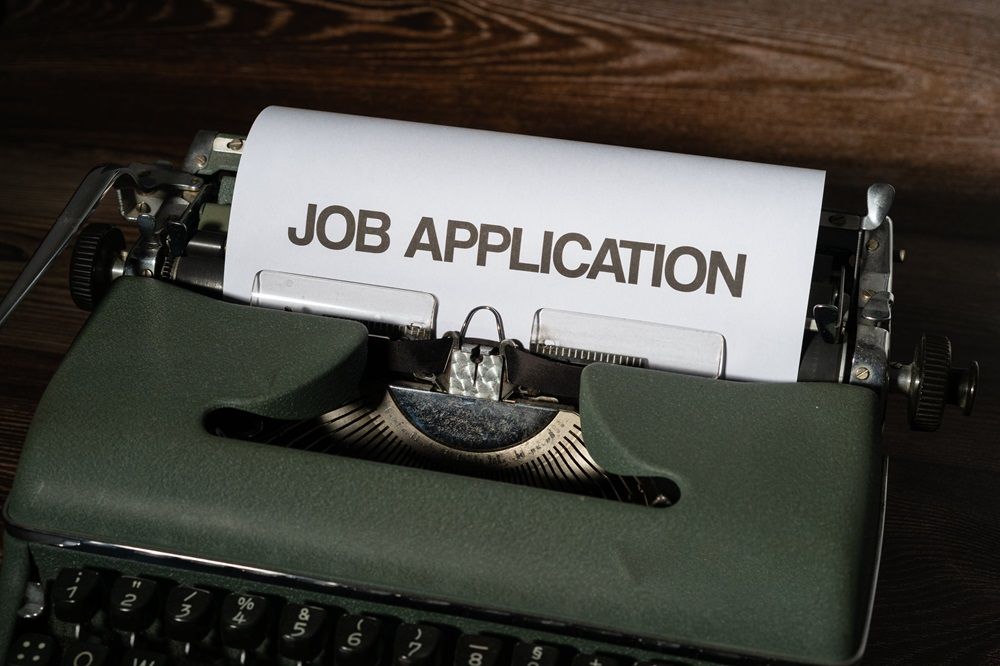In today's competitive job market, securing your dream job can be a challenging endeavour. A well-crafted job application is your first opportunity to make a positive impression on potential employers. However, many job seekers in South Africa unknowingly make common job application mistakes that can hinder their chances of success. To help you navigate this crucial stage of your career journey, we've compiled a list of common job application mistakes to avoid. Looking for more convenient ways to receive job updates via email? Get informed of the latest vacancies in your industry and city by creating your free job alerts on Job Mail.
 Photo by Markus Winkler on Pexels
Photo by Markus Winkler on Pexels
8 Common Job Application Mistakes to Avoid
1. Neglecting Tailoring Your Resume
One size does not fit all. A generic resume that doesn't highlight your specific skills and experiences relevant to the job you're applying for can easily end up in the rejection pile. Always tailor your resume to match the job description, emphasising the qualifications and experiences that align with the position.
Before you start with the steps, create a master resume
- Maintain a master resume that includes all your skills, qualifications, and experiences.
- This comprehensive document serves as a foundation for creating tailored resumes for different job applications.
Here's a step-by-step guide on how to tailor your resume effectively and the best way to avoid one of the most crucial job application mistakes:
Step 1. Thoroughly Analyse the Job Description
- Read the job description carefully, paying attention to key qualifications, skills, and responsibilities.
- Identify specific keywords and phrases used in the job posting, such as the required skills, qualifications, and industry-related terms.
Step 2. Identify Your Strongest Qualifications
- Compare your current resume with the job description.
- Identify the qualifications, skills, and experiences you possess that directly align with the requirements of the job.
Step 3. Prioritise Relevant Information
- Focus on the most relevant qualifications and experiences for the specific job.
- Prioritise information that directly aligns with the key requirements mentioned in the job description.
Step 4. Customise Your Resume's Summary or Objective
- Tailor your resume's summary or objective to highlight your suitability for the specific position.
- Use language similar to that used in the job description to establish a connection between your profile and the role.
Step 5. Adjust Your Skills Section
- Match the skills listed in the job description with your own skills.
- Place the most relevant and sought-after skills at the top of your skills section.
Step 6. Highlight Relevant Experience
- Emphasise your relevant work experience by showcasing accomplishments and responsibilities that align with the job requirements.
- Quantify achievements where possible to provide tangible evidence of your capabilities.
Step 7. Tailor Your Education Section
- Highlight relevant coursework, projects, or academic achievements that align with the job requirements.
- If you have extensive work experience, consider placing more emphasis on that section.
Step 8. Include Relevant Certifications
- If you have certifications relevant to the job, prominently display them in a dedicated section or integrate them into your education or skills section.
Step 9. Review and Proofread
Before submitting your tailored resume, thoroughly review and proofread to ensure it is error-free and effectively communicates your qualifications.
 Photo by Markus Winkler on Pexels
Photo by Markus Winkler on Pexels
2. Skipping the Cover Letter
While some job postings may not explicitly require a cover letter, it's often a missed opportunity to showcase your enthusiasm and qualifications. This might not technically be a job application mistake, but it’s something you should consider including. Craft a compelling cover letter that briefly introduces yourself, explains your interest in the role, and demonstrates how your skills align with the job requirements.
Here's a step-by-step guide to help you create a cover letter:
Step 1. Start with a Strong Opening
- Address the hiring manager or recruiter by name if possible. If the job posting doesn't provide a name, consider doing some research to find out.
- Begin with a confident and engaging statement that immediately grabs the reader's attention. Consider mentioning where you heard about the job opening.
Example:
"Dear [Hiring Manager's Name],
I am writing to express my strong interest in the [Job Title] position at [Company Name], as advertised on [where you found the job posting]."
Step 2. Introduce Yourself Briefly
- Provide a concise introduction, including your current position, relevant experience, and any key qualifications that make you an ideal candidate.
Example:
"As a seasoned [Your Current Position] with [X years] of experience in [Your Industry], I have consistently demonstrated a strong commitment to [mention a relevant achievement or quality]."
Step 3. Express Genuine Interest in the Role
- Clearly state why you are interested in the position and the company. Show that you've done your research and understand the company's values, goals, and industry standing.
Example:
"I am drawn to [Company Name] because of its innovative approach to [industry/sector] and its commitment to [specific value or goal]. I am excited about the prospect of contributing to your team and being part of [mention any recent company achievements]."
Step 4. Highlight Your Relevant Skills
- Carefully analyse the job description and requirements. Identify key skills and qualifications the employer is seeking, and tailor your cover letter to emphasise how your skills align with these needs.
Example:
"My expertise in [specific skill] and proficiency in [another specific skill] align seamlessly with the requirements outlined for the [Job Title] position. During my time at [Previous Company], I successfully [provide a specific example or achievement that demonstrates your skills]."
Step 5. Provide Specific Examples
- Back up your claims with specific examples or achievements from your past experience. This adds credibility to your application and helps the employer visualise how you can contribute to their organisation.
Example:
"In my previous role at [Previous Company], I played a key role in [describing a specific project or accomplishment] that resulted in a [quantifiable outcome, such as increased efficiency or revenue]."
Step 6. Conclude with Enthusiasm
- Reiterate your enthusiasm for the role and express your desire for an interview to further discuss how your skills and experiences align with the company's needs.
Example:
"I am confident that my skills and experiences make me a strong fit for the [Job Title] position at [Company Name]. I am eager to further discuss how I can contribute to your team during an interview. Thank you for considering my application."
Step 7. Closing and Signature
- Use a professional closing (e.g., "Sincerely" or "Best Regards") and include your full name.
Example:
"Sincerely,
[Your Full Name]"
Remember to keep your cover letter concise, focused, and tailored to the specific job you're applying for. By showcasing your qualifications and expressing genuine interest in the role and company, you'll create a compelling cover letter that increases your chances of standing out to potential employers.
3. Ignoring the Application Instructions
Job postings often come with specific application instructions. Failing to follow these instructions can give the impression that you lack attention to detail or disregard the employer's requirements. Read and follow the application guidelines carefully, including submitting the required documents and information, it’s the best way to avoid this job application mistake.
 Photo by DCStudio on Freepik
Photo by DCStudio on Freepik
4. Not Proofreading Your Application
Spelling and grammatical errors can instantly undermine your credibility. Before submitting your application, thoroughly proofread your resume and cover letter. Consider using spell-check tools and ask a friend or family member to review your materials for errors.
5. Overlooking Keywords
Many employers use Applicant Tracking Systems (ATS) to screen resumes. These systems scan for keywords and phrases that match the job description. Ensure your resume includes relevant keywords from the job posting to increase your chances of passing the initial screening process.
Read: Writing an ATS-Friendly CV: A Guide
6. Providing Irrelevant Information
Keep your job application focused on your professional qualifications. Avoid including personal information, such as marital status or hobbies, unless it's specifically requested or relevant to the job.
7. Failing to Research the Company
Employers appreciate candidates who show genuine interest in their organisation. Conduct research on the company, its culture, and its values. Mention your findings in your cover letter or during the interview to demonstrate your commitment.
8. Being Inconsistent
Inconsistencies in your job application can raise red flags. Ensure that the information provided in your resume matches the details in your cover letter, LinkedIn profile, and any other professional documents.
The job application process is your first opportunity to make a strong impression on potential employers. By avoiding these common job application mistakes, you can significantly improve your chances of standing out and securing the job you desire. With careful attention to detail, you can increase your prospects in South Africa’s competitive job market. Do you want to get email updates about jobs more conveniently? Set up free job alerts on Job Mail to stay up to date on the most recent openings in your sector and city.




